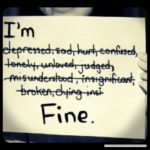
Recently a pediatrician phoned me with a concern about a three-year-old patient I see in my psychology practice. During a routine visit, the doctor said, “Karson” had bitten him. In fact, the young child had a history of behavior problems.
“Do you think there’s a diagnosis?” the doctor asked me.
I told her I wasn’t a fan of diagnosing toddlers. “What I can tell you,” I said, “is that he has strong reactions when people approach him too suddenly, loudly, or unexpectedly.”
I was describing a phenomenon that I place at the center of many mental health concerns for children: faulty neuroception. Neuroception is a game-changing concept based on the groundbreaking work of the neuroscientist Dr. Stephen Porges. It refers to the way we subconsciously perceive safety or threat from the environment. When it’s awry, a child can inaccurately perceive threat and, in turn, strike out in defense.
Understanding neuroception can help explain the most severe challenging behaviors, especially in toddlers. For Karson, it meant that when his regular pediatrician’s substitute abruptly asked him questions at close range, his automatic response was to strike out. He didn’t have time for intentional thinking—the bite was a defensive impulse.
And it wasn’t the first time. Karson’s family had originally sought my help after his preschool had asked him to leave for biting another student. His parents and his pediatrician all worried that either a disorder was to blame or he needed better discipline.
Instead, I reframed his behavior as a response to stress. I explained that certain experiences caused Karson to shift into “fight or flight” mode, sparking reactions that were both instant and severe. Viewing troubling behaviors this way offers parents and caregivers a compassionate lens—and new set of tools for helping the child. (Approaches that include punishment or emotional separation fall short because they only add to the child’s sense of threat.)
As a child psychologist I employ an ability perspective–not a disability perspective—to enhance young children’s mental health. Instead of simply finding a diagnosis (simply a checklist) to explain behavior, we must seek first to determine the underlying causes. We can view difficult behaviors as a way to understand the child’s challenges in maintaining a calm presence in mind and body (known as emotional regulation).
Once we identify the real, underlying causes of challenges, we can truly help a child.
Here’s what you can do:
- Understand that a diagnosis only means that a child meets the diagnostic criteria (checklist) for a particular label. Labels can be important since they allow for insurance coverage (and services), but they aren’t explanations.
- Ask providers to look for reasons below the surface of your child’s behaviors for clues to support the child. For example, challenges in the child’s sensory (auditory, visual, movement) systems can subconsciously bias the child towards emotional upheaval and the neuroception of threat. Children with histories of trauma, multiple separations and stress are also vulnerable.
- Find providers that embrace relationship-based and developmentally-based approaches to helping your child.
Human love and compassion should drive the healing process when toddlers exhibit mental health challenges, regardless of the label they are given.
Source: Dr. Mona Delahooke



